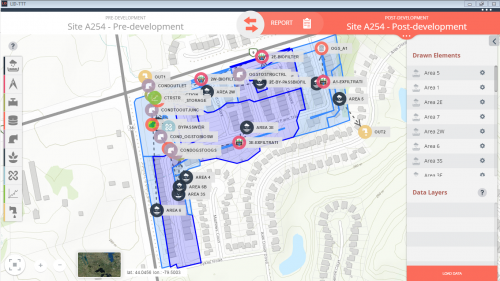Low impact development treatment train tool
The Low Impact Development Treatment Train Tool (LID TTT) is designed to help developers, consultants, municipalities and landowners understand and implement more sustainable stormwater management planning and design practices in their watersheds.
The LID TTT focuses on the use of Low Impact Development best management practices (BMPs) to meet stormwater management criteria for the site and can be used to:
- analyze annual and event based runoff volumes,
- including water budget information: surface evapotranspiration, surface runoff, and infiltration to soil
- provide estimates of water quality improvements.
The LID TTT is built upon the open source EPA SWMM5 hydrologic model providing a user-friendly interface for novice modelers and cross-compatibility with SWMM5 for further model development.
The LID TTT has been developed in partnership between Lake Simcoe Region Conservation Authority, Credit Valley Conservation, and Toronto and Region Conservation Authority.
Integration with this guide is through suggested 'starting point' values for design parameters for the following BMP types:
- Bioretention
- Vegetated filter strips
- Infiltration trenches
- Permeable pavements
- Rainwater harvesting
- Swales
- Dry ponds
This links to the project page, where you can download your free copy of the LID TTT.
How to download & install the Tool[edit]
View the Step-by-step instructional video below on how to download and install the LID TTT. This video covers how to set up your model, add LIDs and analyze results for pre- to post-development scenario
How to use the Tool[edit]
View the Step-by-step instructional video below on how to use the LID TTT for you LID BMP projects.
How to size your LID using an I:P ratio[edit]
View the Step-by-step instructional video below on how to use the LID TTT to route a simple residential sub-catchment to a bioswale feature, and shows users to consider the Impervious to pervious (or I:P) ratio in sizing the LID.

